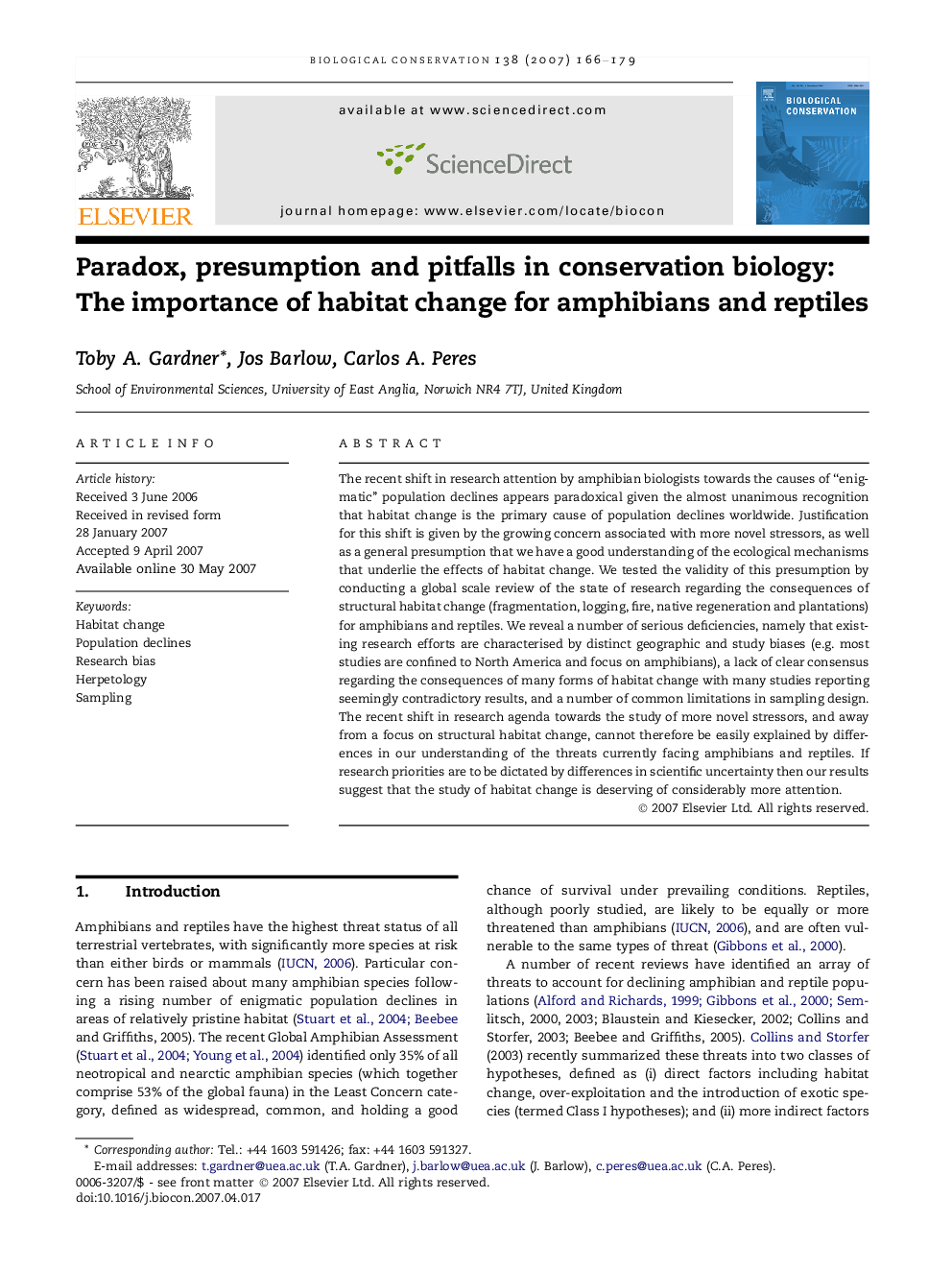| Article ID | Journal | Published Year | Pages | File Type |
|---|---|---|---|---|
| 4387258 | Biological Conservation | 2007 | 14 Pages |
The recent shift in research attention by amphibian biologists towards the causes of “enigmatic” population declines appears paradoxical given the almost unanimous recognition that habitat change is the primary cause of population declines worldwide. Justification for this shift is given by the growing concern associated with more novel stressors, as well as a general presumption that we have a good understanding of the ecological mechanisms that underlie the effects of habitat change. We tested the validity of this presumption by conducting a global scale review of the state of research regarding the consequences of structural habitat change (fragmentation, logging, fire, native regeneration and plantations) for amphibians and reptiles. We reveal a number of serious deficiencies, namely that existing research efforts are characterised by distinct geographic and study biases (e.g. most studies are confined to North America and focus on amphibians), a lack of clear consensus regarding the consequences of many forms of habitat change with many studies reporting seemingly contradictory results, and a number of common limitations in sampling design. The recent shift in research agenda towards the study of more novel stressors, and away from a focus on structural habitat change, cannot therefore be easily explained by differences in our understanding of the threats currently facing amphibians and reptiles. If research priorities are to be dictated by differences in scientific uncertainty then our results suggest that the study of habitat change is deserving of considerably more attention.
